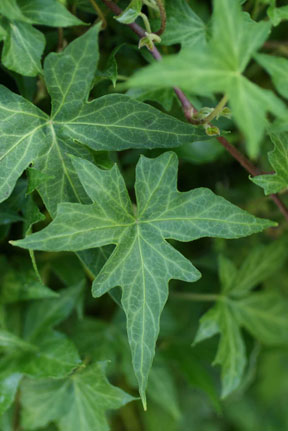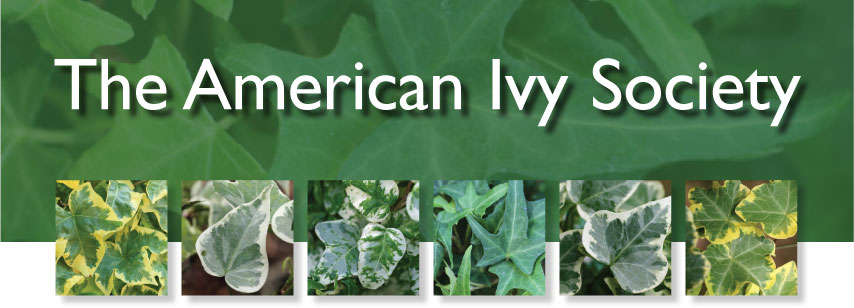|
Ivy of the Year 2010
Hedera helix 'Ritterkreuz'
 Photo: Rachel Cobb Photo: Rachel Cobb
The American Ivy Society has selected Hedera helix ‘Ritterkreuz’ as its 2010 Ivy of the Year. ‘Ritterkreuz’ is one of those ivies that you may overlook at first glace but when you take the second look, you will be won over. Ritterkreuz is German for Knights Cross and the leaf shape is reminiscent of a Maltese Cross. This ivy sported from Hedera helix ‘Perfection’, a large ‘Needlepoint’ ivy at the Neuburg, Monastery Nursery, Heidelberg, West Germany and was registered by Brother Ingobert Heieck in 1981.
This Bird’s Foot ivy in the Pierot Classification system has obscurely five lobes, with two small basal lobes, sometimes appearing as teeth on the lateral lobes. The terminal and lateral lobes are angular, sometimes toothed and are broadest near the middle, giving an almost diamond shape to the lobes. Color is mid green with lighter veins. When planted outside, the color will become dark green with a reddish cast in winter.
This versatile ivy does well as a houseplant, can be used in all types of topiary and has been shown to be winter hardy up to at least zone 6 or-10 degrees (F). It will climb low walls but is not particularly fast growing either on a wall or in the ground.
There is commercially available an ivy under the name Hedera helix ‘Florida’, which was sent to the American Ivy Society Research Center for identification. This ivy is Hedera helix ‘Ritterkreuz’. Since ‘Florida’ is a newer name and has not been registered, ‘Ritterkreuz’ is its correct name.
For successful outdoor planting, remember to plant deep, removing several of the lower leaves and planting to the new lowest leaves. Ivy will root along the new stem, helping it to become established. When possible, plant variegated ivies where they will get some protection from the winter sun and wind which causes most seasonal damage.
Click Here for Press Photo
"Ivy of the Year"
Because of the surge in popularity of ivy as a pot plant as well as in the garden, The American Ivy Society announced it will select an "Ivy of the Year" annually commencing in 2001. The ivy chosen from the nominees must be easy to grow, hardy, lush, beautiful, and not invasive in the garden.
The "Ivy of the Year" will be chosen by a committee made up of members of The American Ivy Society, nurseryman and growers across the United States. Each ivy will have completed the three year trial period in The American Ivy Society test gardens as well as in commercial nurseries.
When The American Ivy Society was founded in 1974 there were approximately 60 different cultivars of Hedera (Ivy) grown commercially. Today there are over 480 named cultivars. The intense interest in ivy began when people learned that the new ivies are available in an array of colors ranging from all shades of green, green and white to yellows and golds - and they are not invasive as were many of the older cultivars. Some ivy leaves are so delicately cut they resemble the print a bird's foot makes in the sand, while others are curly or fan shaped. They are used as groundcovers, garden specimens, hanging baskets, mixed containers, topiary and the adult forms of ivy are even grown as shrubs.

| 